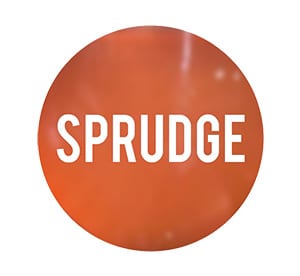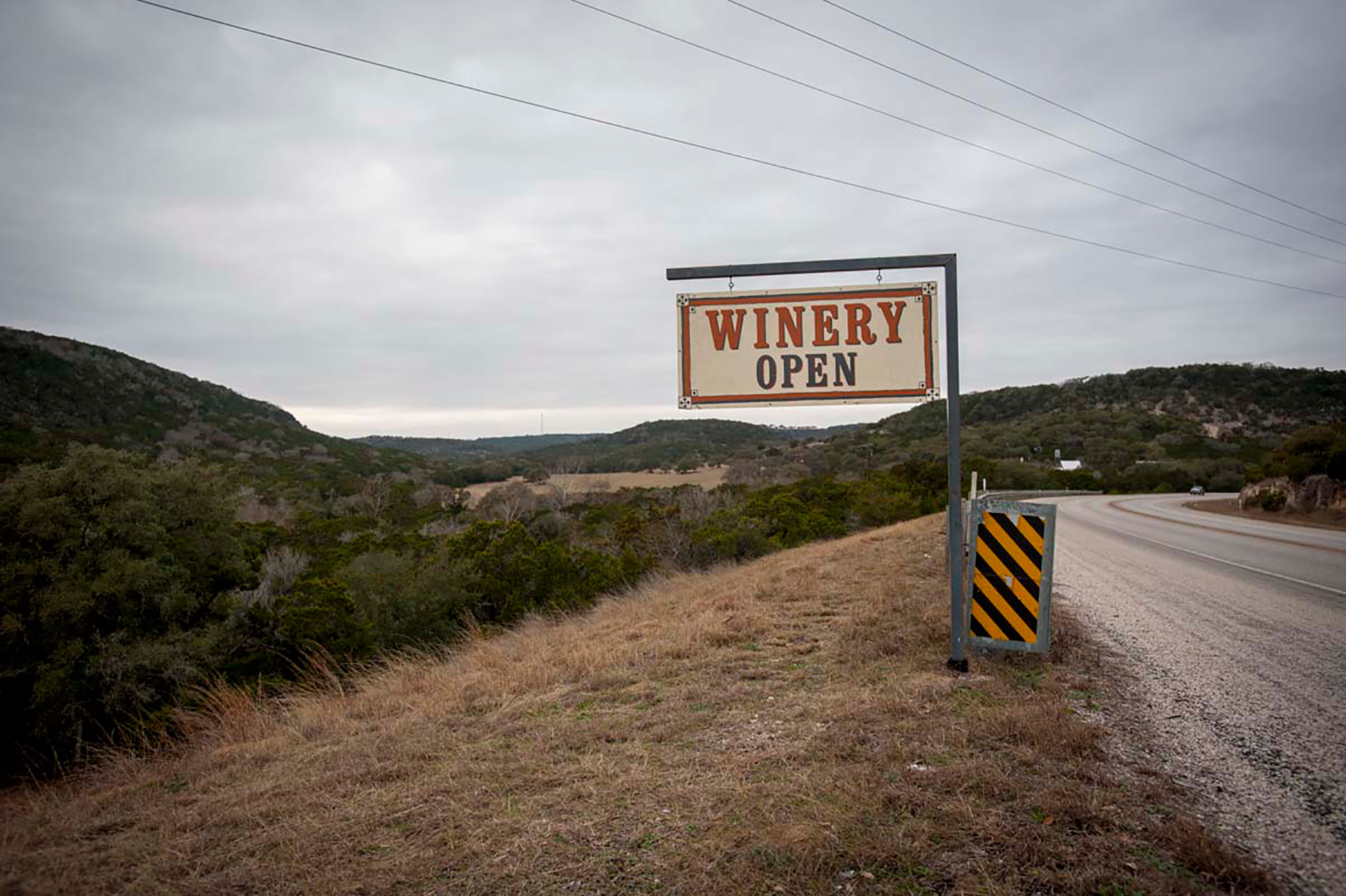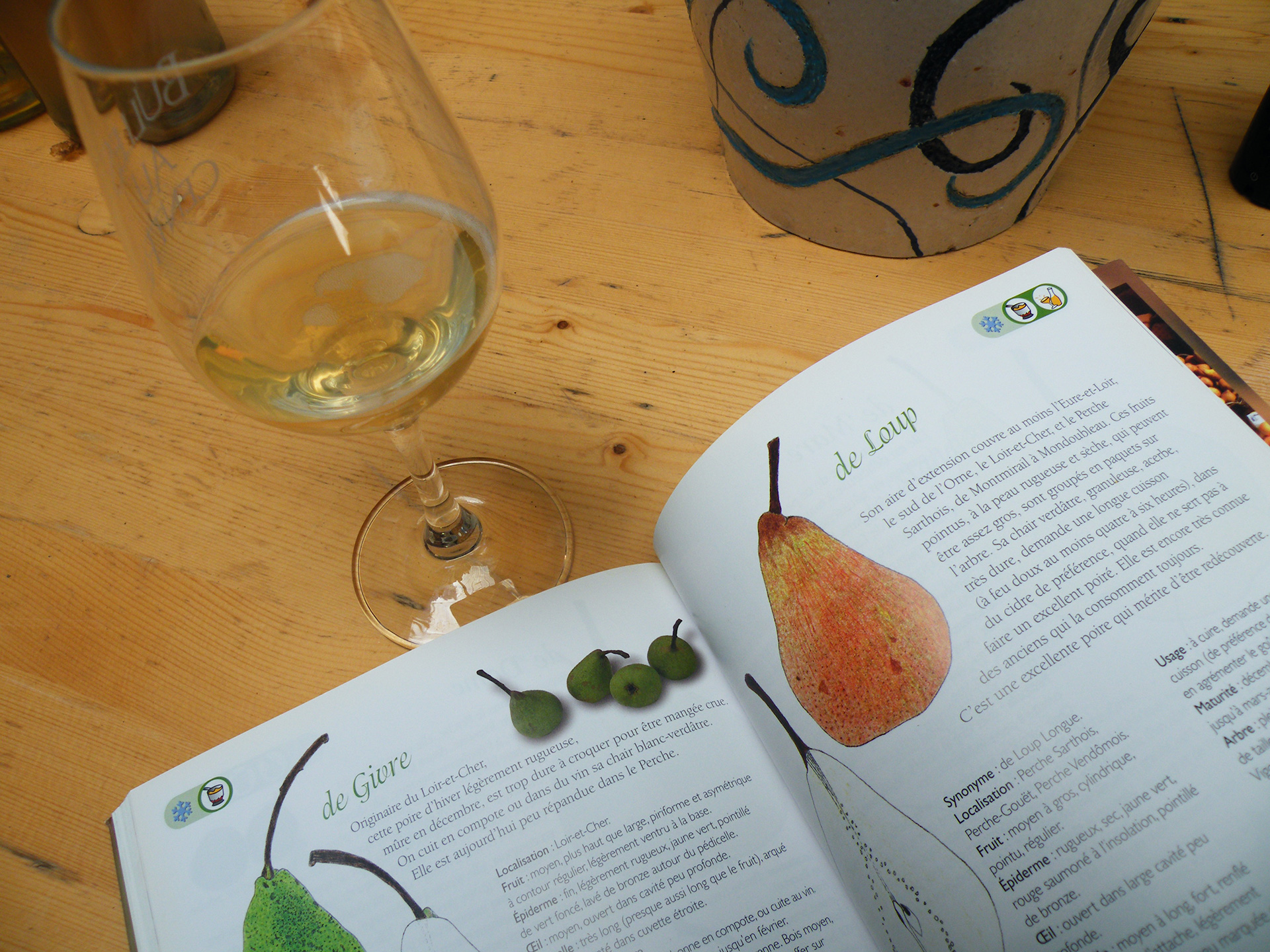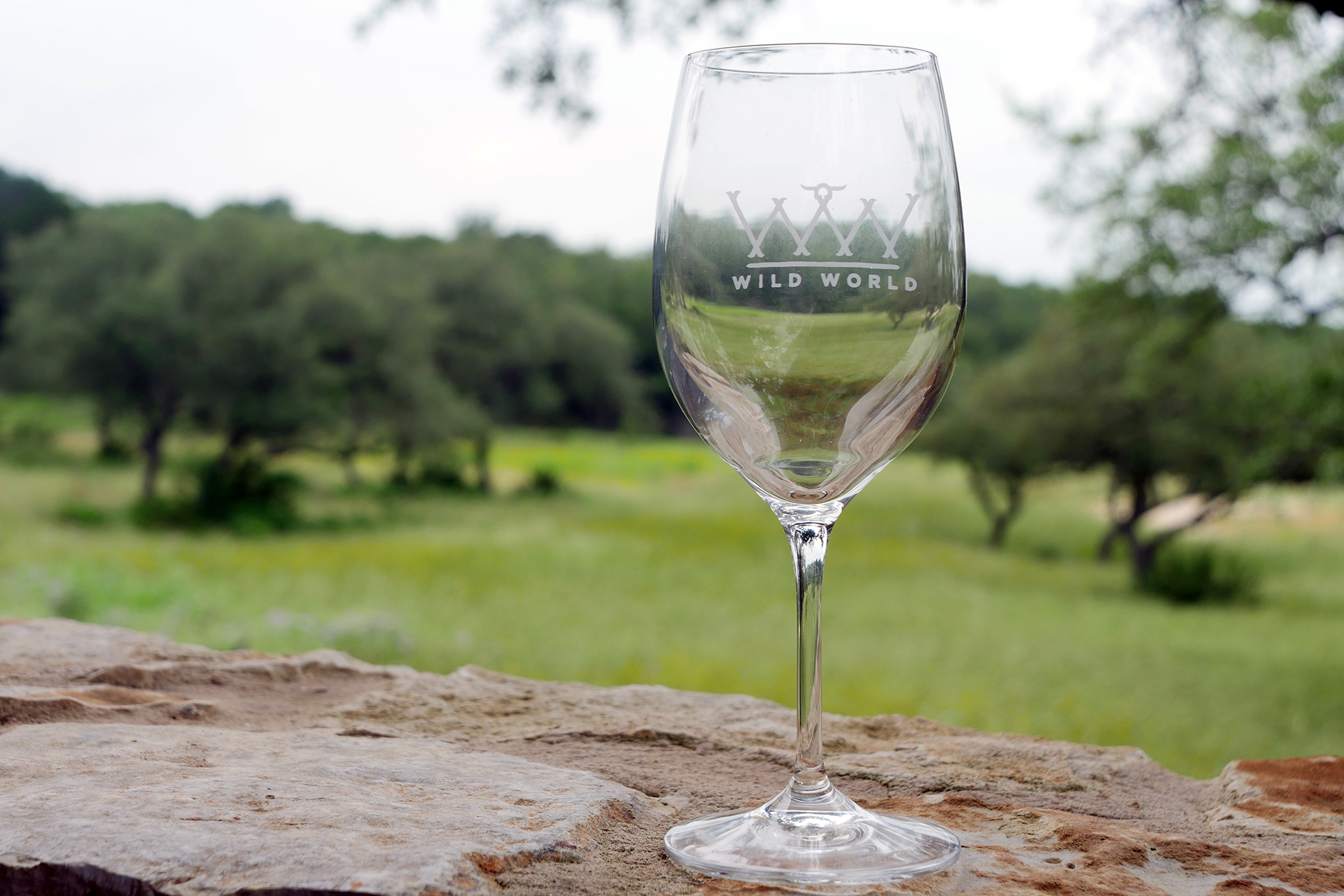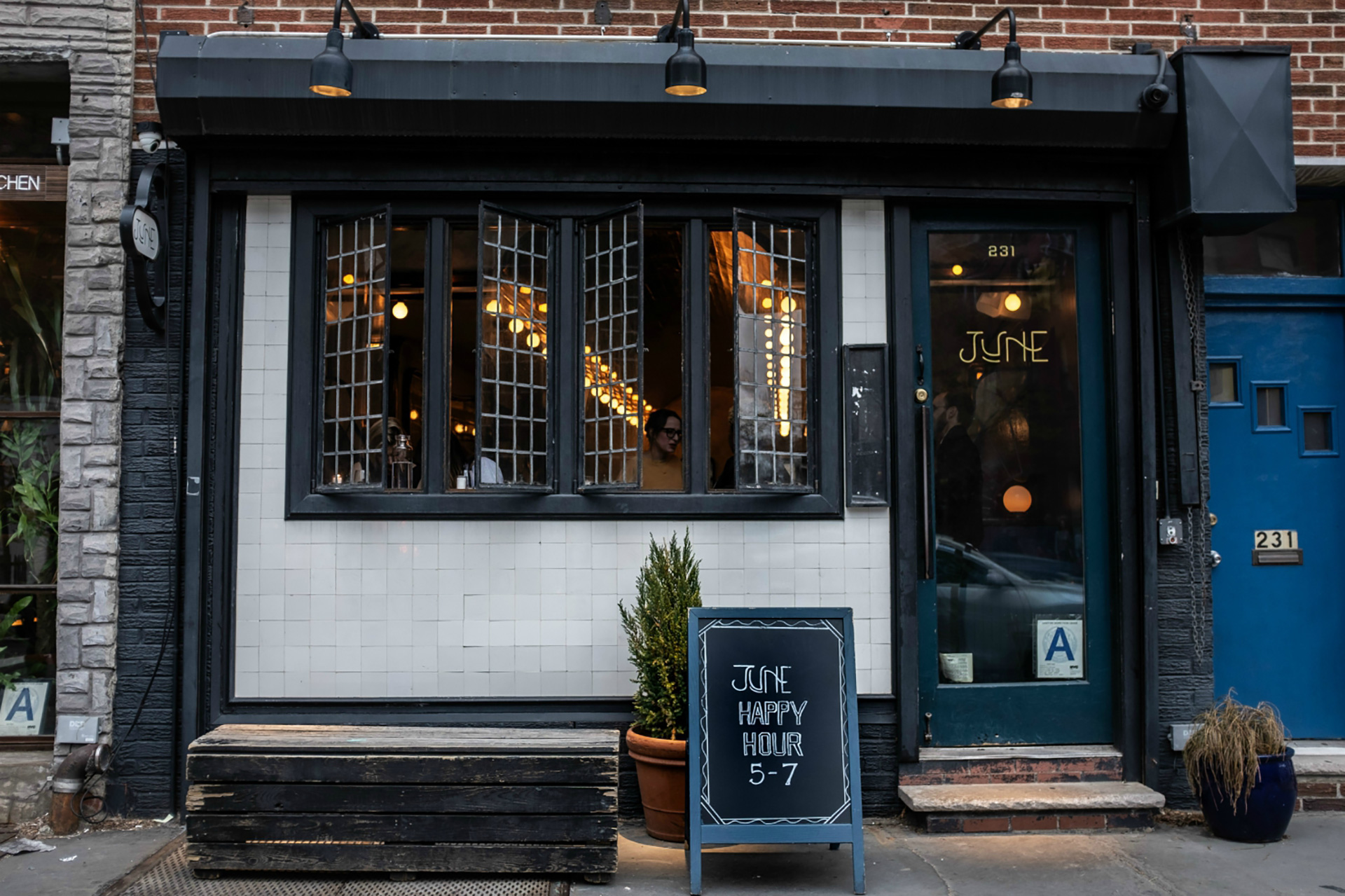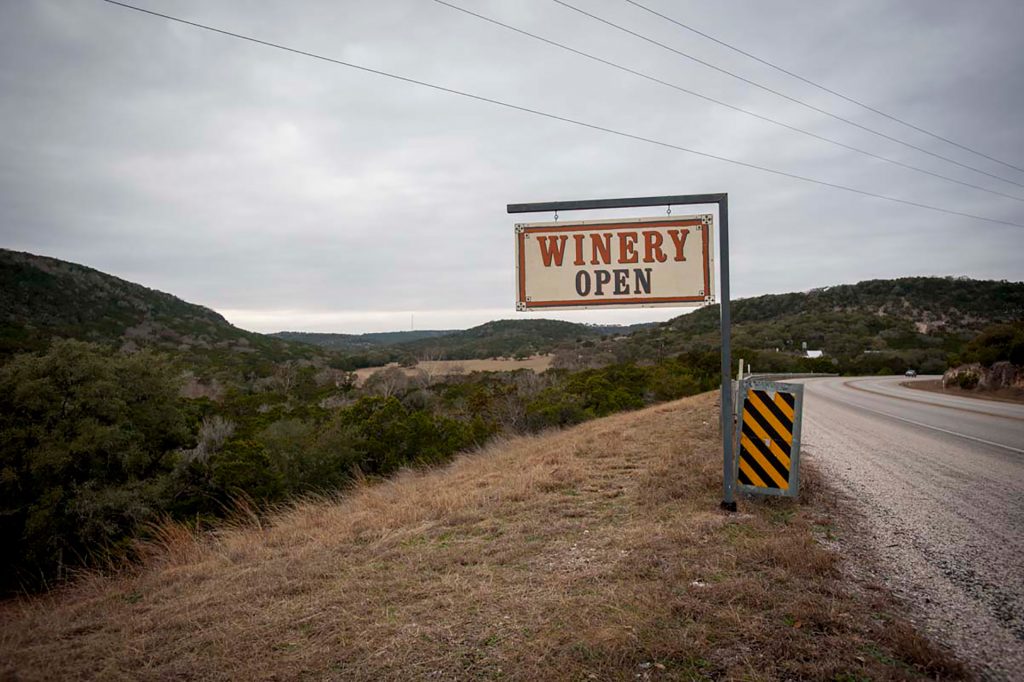
Hailing from Australia’s harsh interior, I’d always imagined Texas to be forged from the same arid ingredients: dry dusty dirt and dehydrated vegetation. Not to mention peopled by the same characters—this is supposed to be cowboy country, after all. So when a friend offered to show me around the Lone Star State, I jumped at the chance, launching into my usual research of seeing what popped up related to natural wine.
As I dug in, I realized that unlike the area around my hometown of Alice Springs, Australia, Texas is peppered with wineries. And there was one that looked very promising indeed, La Cruz de Comal, approximately halfway between San Antonio and Austin. So ignorant was I of the fact that Texas is such a big wine producer, I soon learned that Texas Hill Country AVA, where La Cruz de Comal is situated, happens to be no less than America’s second largest wine-producing region.
On the day we arrive, we roll down the winery’s steep driveway, hugging the tiny three-acre vineyard, our eyes drawn to the pleasing sight of dense grass growing up to, and around, the base of each vine, a reassuring telltale sign that this is indeed a haven from herbicide use. Next comes the namesake cruz, with its fascinating backstory, standing guard over the vines and the terra cotta roof tiles of the tasting room, reminiscent of southern France and Italy. One could be forgiven for wondering if we were still in America.
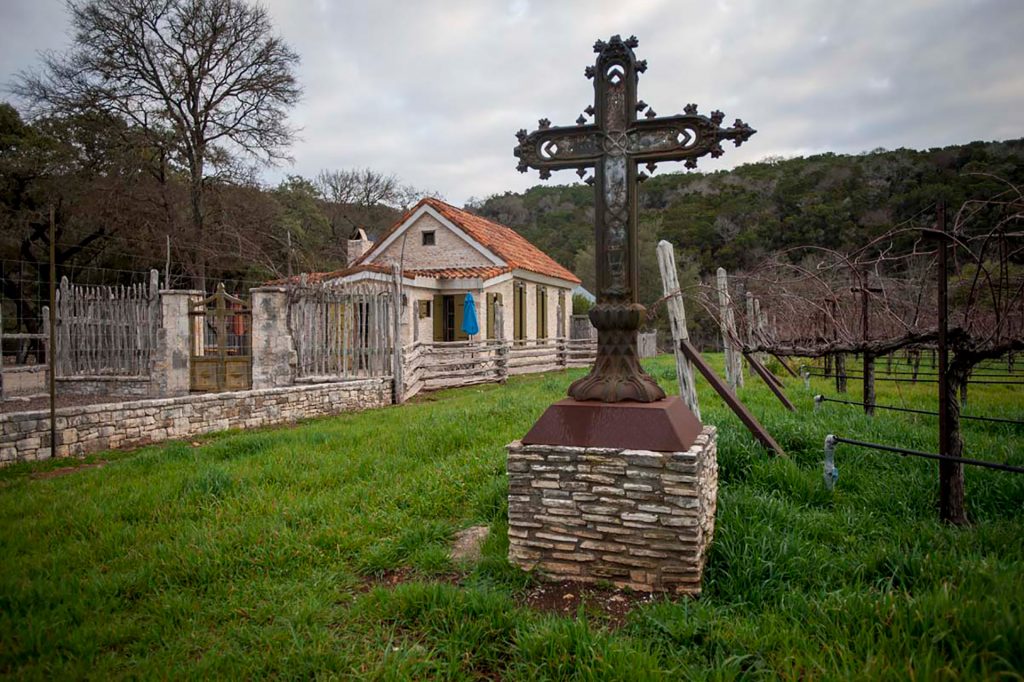
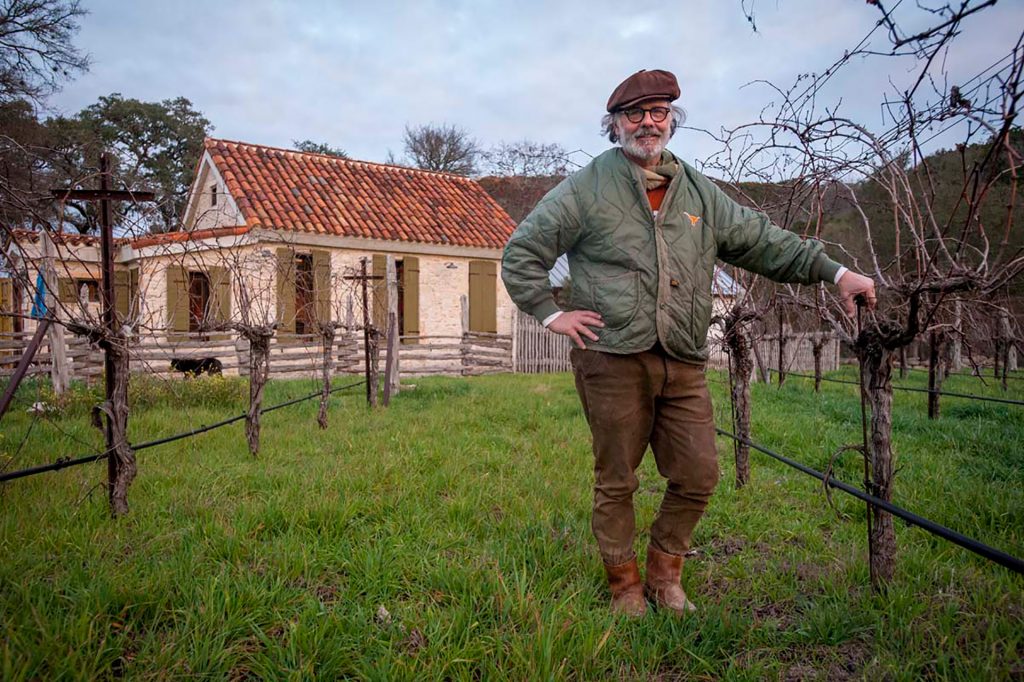
But no, we are definitely in Texas. We are greeted by the personable Lewis Dickson, the proprietor of La Cruz de Comal, assisted by Ian Rosel, as well as two dogs, Poncho and Pinto. What strikes you first about Dickson is that he’s very much someone with a story to tell, a raconteur. With personality as big as the Texas landscape, Dickson clearly likes to entertain. Self described as a “bon vivant,” Dickson, a third-generation Houstonian, was a lawyer before turning his hand to wine, at one point even admitting a passion for writing rhythm and blues.
“Believable lies or plausible truths” he quips about his stream of tales—hopefully today it is more of the latter as he pours his Pétard Blanc, French for white firecracker. This is Dickson’s 100% Blanc du Bois (a hybrid grape created in the ’60s from European varietals like Muscat and indigenous Floridian grapes). It zips along the tongue with freshness and vibrancy, and notes of lemon curd.
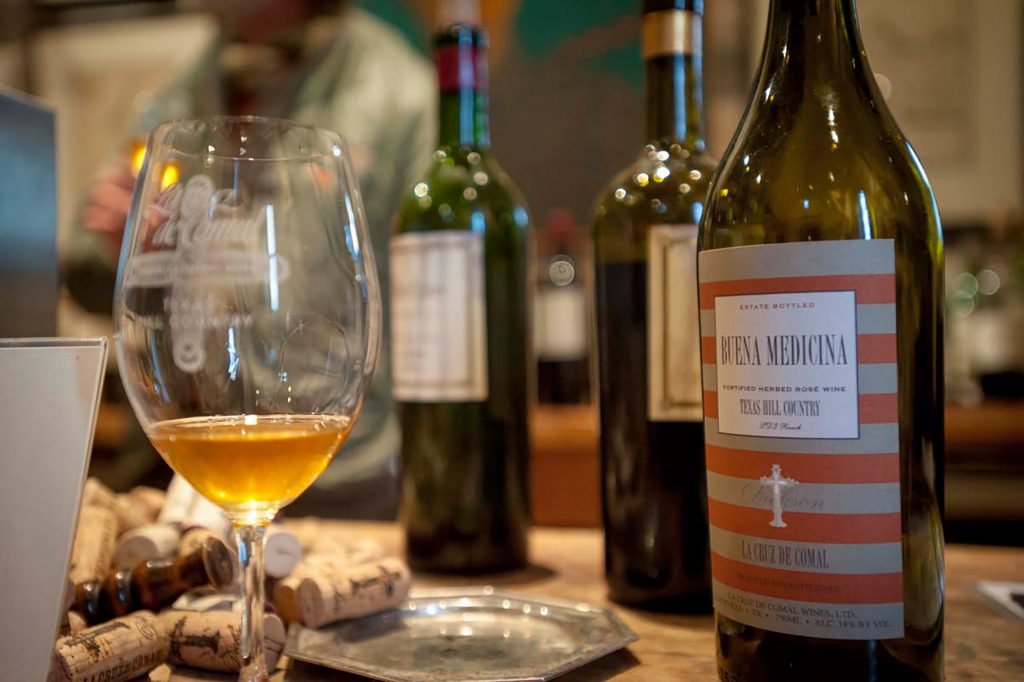
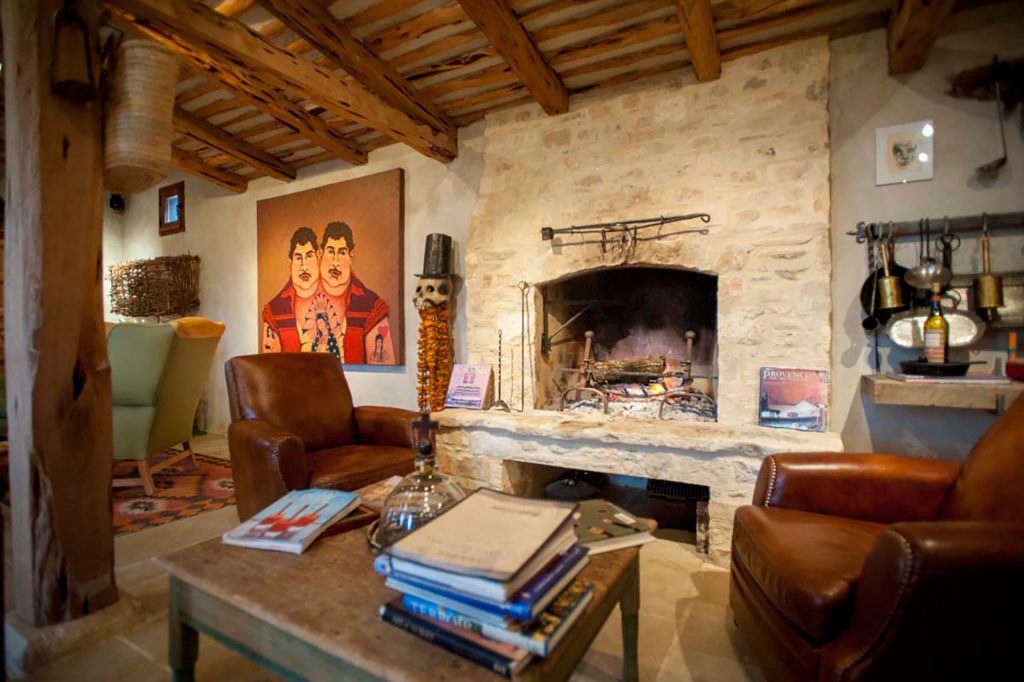
La Cruz de Comal is particular and noteworthy for many reasons. For one, its wines are made from 100% estate-grown grapes, raised in spitting distance of the winery. Second, the entirety of the winery’s wines are made from only two grape varietals, the aforementioned Blanc du Bois and Black Spanish. Planting began in 2000 with 11 different varietals, and through a process of natural selection, only these two responded favourably to the climate above, and the limestone and caliche below. But from these modest means, an impressive array of still and fortified wines are made, up to eight in any given year, including sherry, vermouth, and port.
Production is tiny by modern standards, varying anywhere from 33 to 200 cases per annum, depending on the year.
“I’m not really a winemaker, I’m a facilitator,” says Dickson, a fact illustrated by his refusal to add anything to his wine, not even sulphur dioxide. Rare indeed is the winemaker who is prepared to take such a risk. Dickson instead talks of the role of carbon dioxide and rigorous temperature control in protecting the wines. Dickson is particularly proud of the fact that no commercial yeast has ever been used at La Cruz. But also his refusal to take anything away, as witnessed by what’s left in the coffee filter as he gives his 2005 Troubadour red a rock n’ roll filtering.
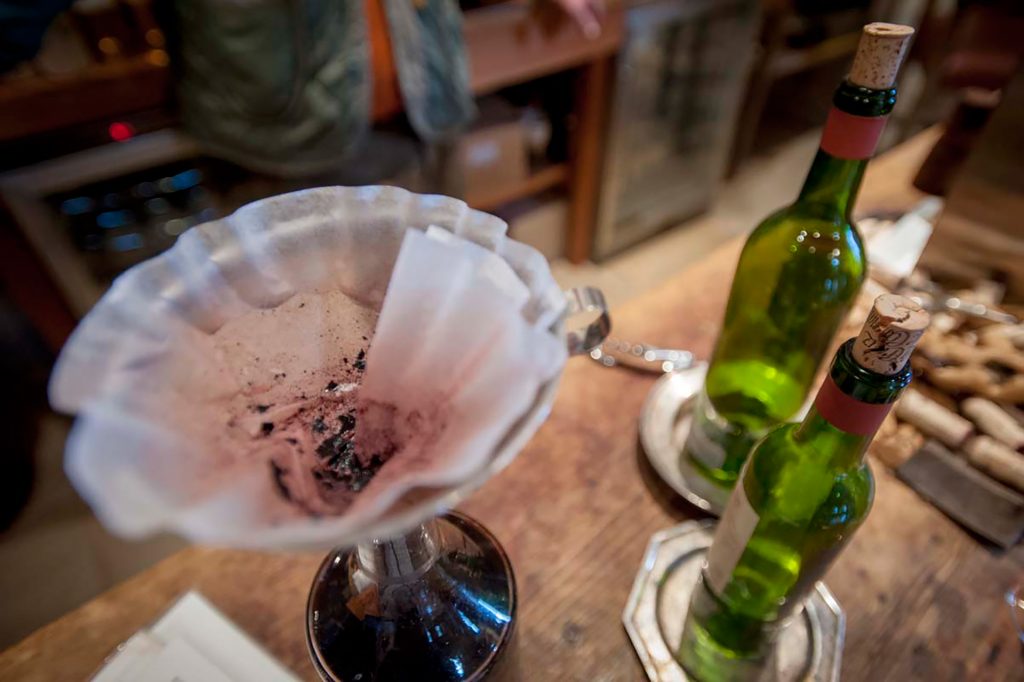
Perhaps betrayed by the nod to European architecture, and keeping in with Dickson’s adherence to a more traditional style of winemaking, the wines are all refined and balanced, not bold and coarse as the surrounding landscape. We’ve found the velvet underbelly of Texas. It is impossible, however, to talk about La Cruz de Comal without mentioning another maverick winemaker, Tony Coturri. This seminal California vintner has been an instrumental influence on Dickson. The two have been friends for many years, and Coturri is listed as “consultant” on all the La Cruz de Comal bottles we saw. Although to my knowledge, Coturri does not dabble in the dark arts of fortified wines—something Dickson seems to relish.
Never one to disappoint, Dickson, quite the troubadour himself, has one last trick up his sleeve. After rustling about in the back room, Dickson returns with a mystery bottle, and in typical fashion, another elaborate story. This wine is named “Shango,” a nickname given to him by a neighbour back in Houston. Nothing unusual about that, except that said neighbour went on to become lead singer and guitarist Billy Gibbons of ZZ Top fame. At this point, we’ve lost count of the number of wild tales, but the potential of terroir-focused wines from La Cruz de Comal rests firmly in our minds.
But if you’re not interested in tasting a truly distinctive Texas Hill Country wine, then at least stop by for a good yarn.
